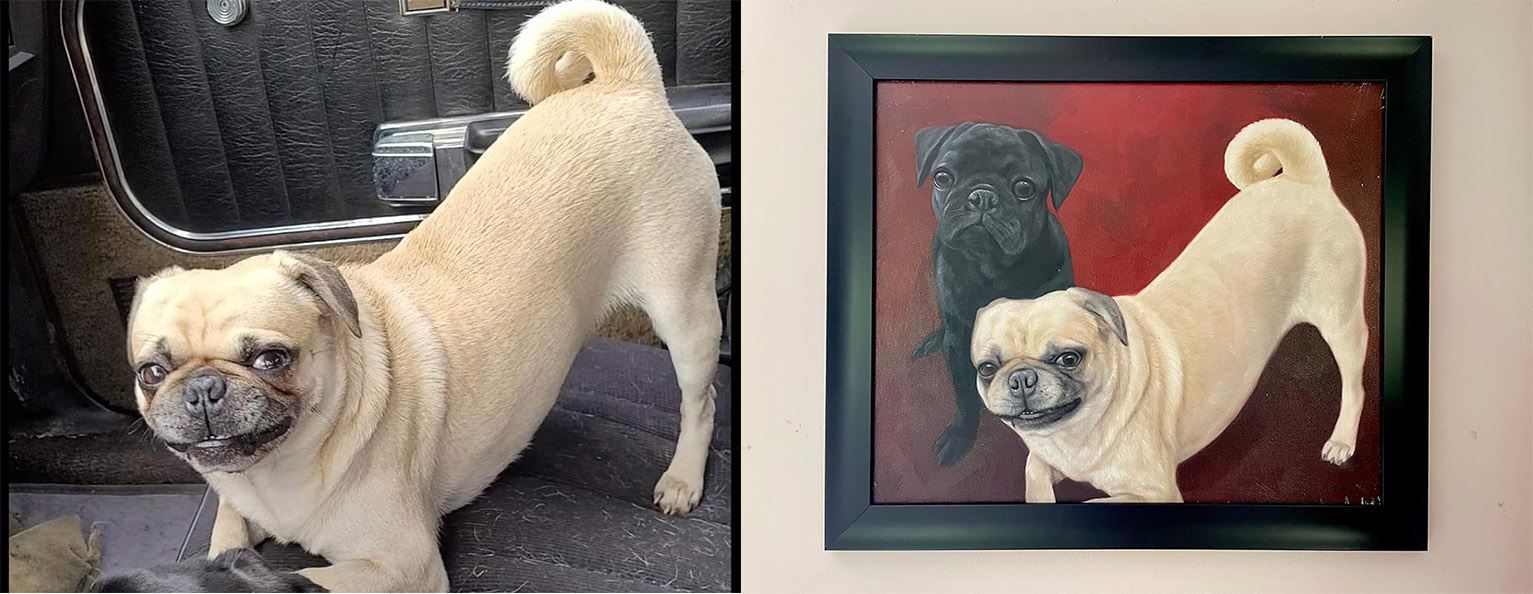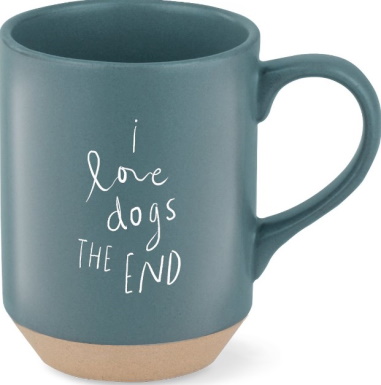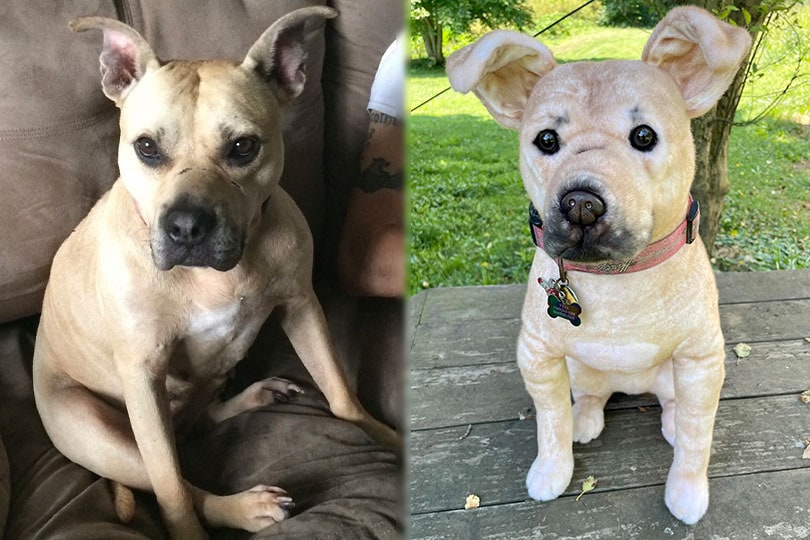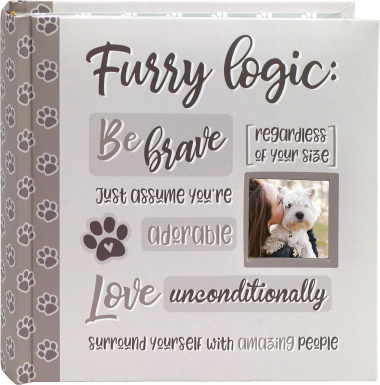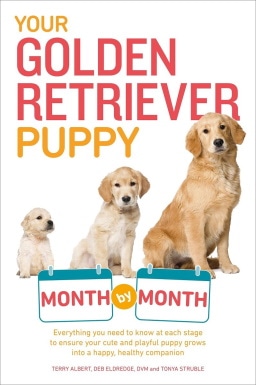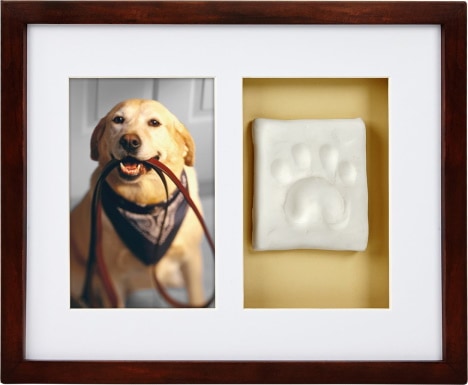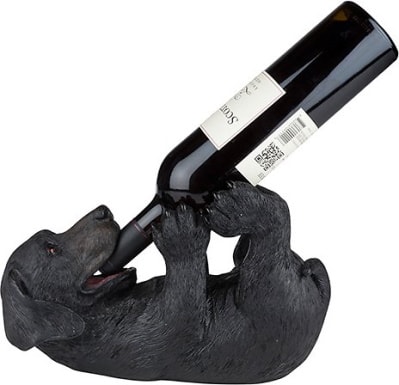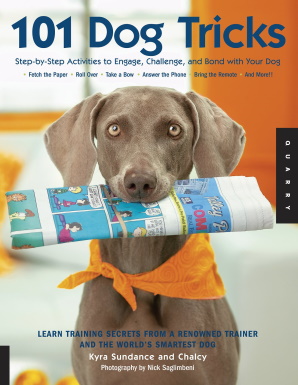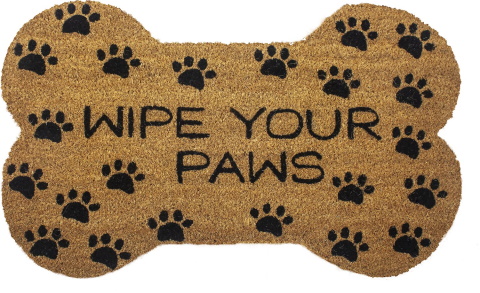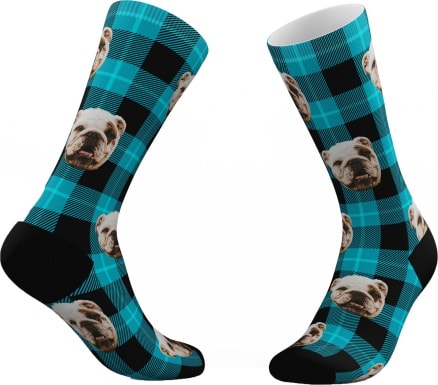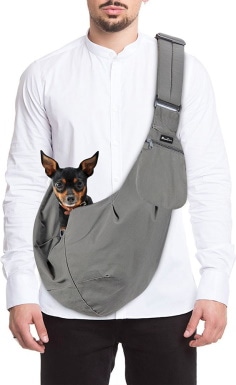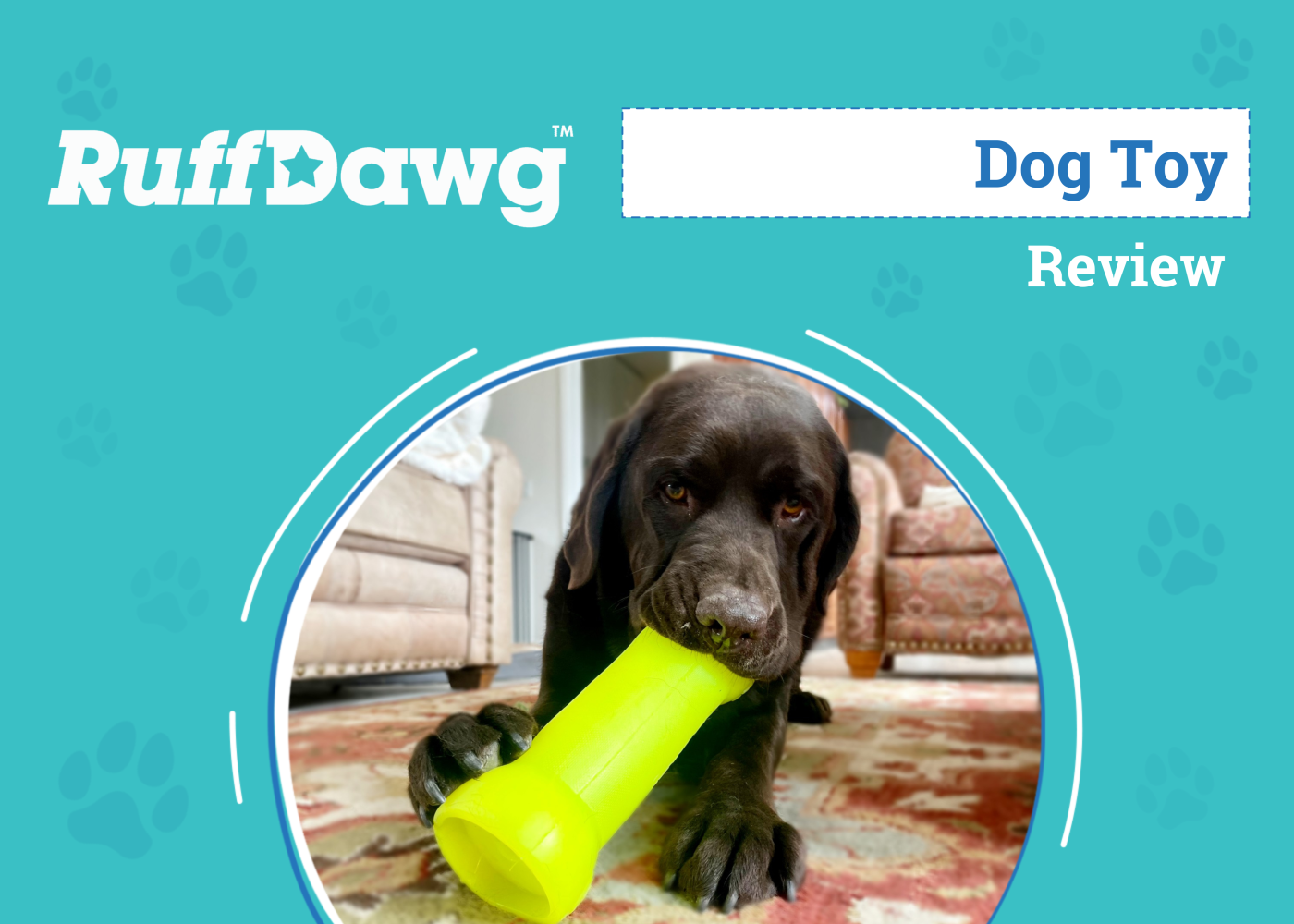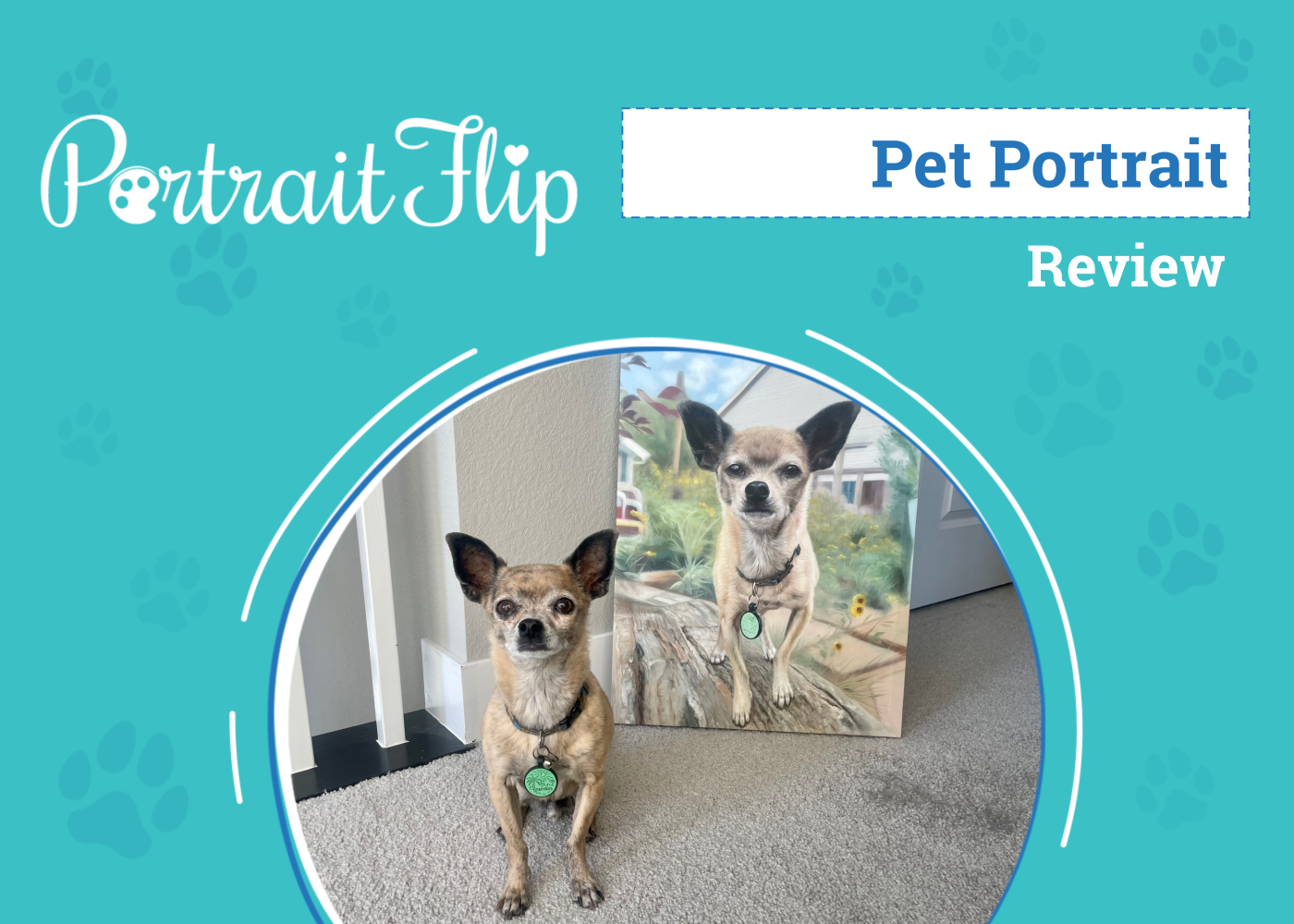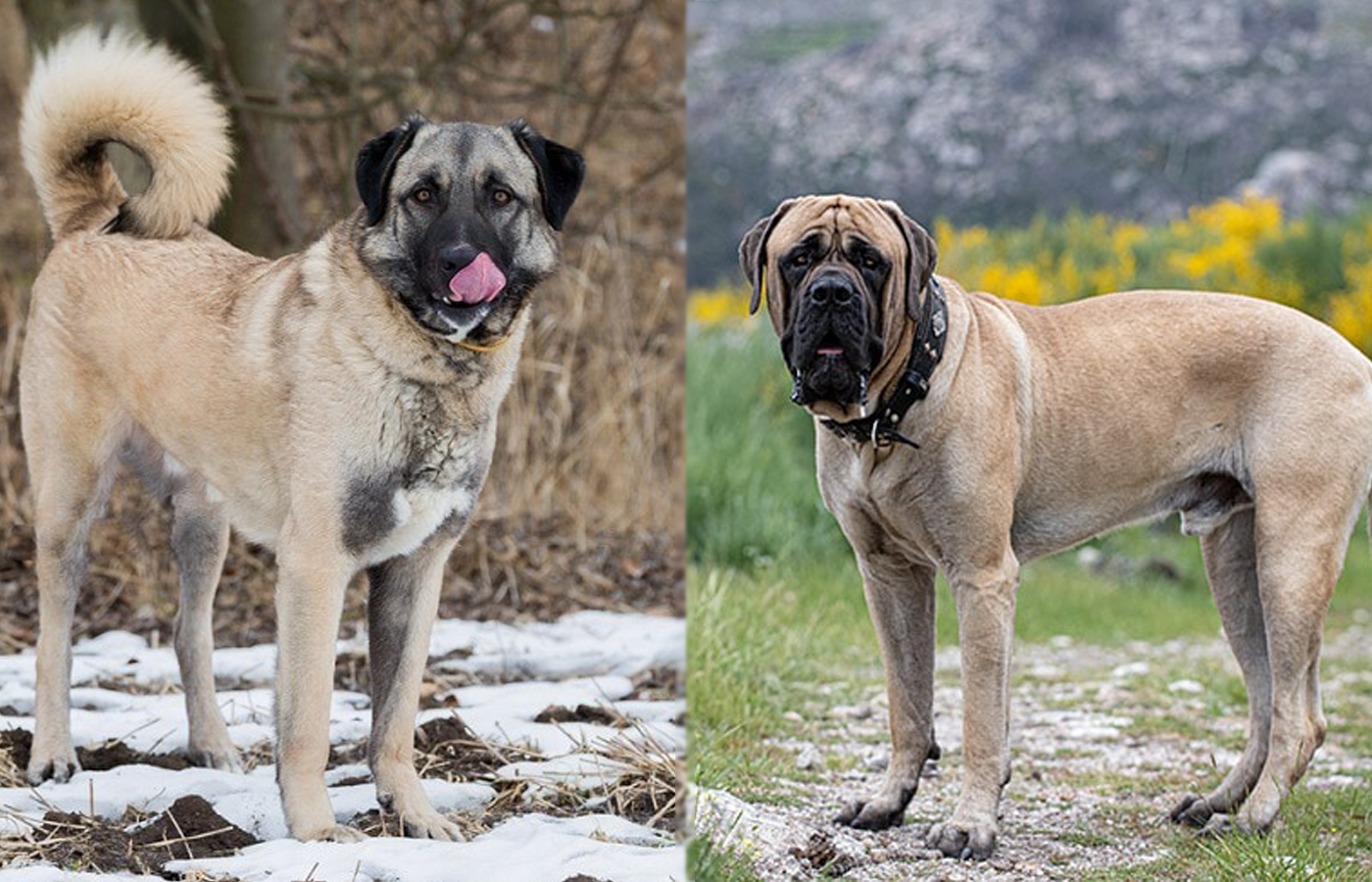You’re almost sure to make dog lovers happy when you give them dog-related presents. The market for gifts for dog lovers is booming, and it’s easy to get lost in the process of finding a good gift amid a sea of choices.
We’ve done the work for you and have reviewed some of the most popular dog gifts available this year. Our reviews range from funny gifts to thoughtful ones. As you read through each one, you’ll start to find yourself getting inspired to purchase the perfect gift for the dog lover in your life.
A Quick Comparison of Our Favorites (Updated in 2024)
| Rating | Image | Product | Details | |
|---|---|---|---|---|
| Best Overall |

|
Paint Your Life Pet Portraits |
|
CHECK PRICE |
| Best Value |

|
Fringe Studio “Dogs The End” Stoneware Mug |
|
CHECK PRICE |
| Premium Choice |

|
Cuddle Clones Personalized Stuffed Dog |
|
CHECK PRICE |

|
Mobile Dog Gear Weekender Backpack Pet Travel Bag |
|
CHECK PRICE | |
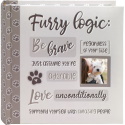
|
Malden International Designs “Furry Logic” Photo Album |
|
CHECK PRICE |
The 12 Best Gifts for Dog Lovers
1. Paint Your Life Pet Portrait – Best Overall
| Key Features | Customizable portraits, multiple pet options |
| Suitable for | Celebrating & memorializing pets |
Paint Your Life offers customizable pet portraits inspired by your fur babies. To get started, all you need is a few inspirational pictures, to decide on a design – oil, charcoal, acrylic, colored pencil. pastel or black pencil – and then Paint Your Life sends you a mockup of your portrait. You can request modifications or approve the proof and a real-life artist gets to work on your picture. The quality and craftsmanship of the finished product is impressive. Their turnaround time is very reasonable seeing as you have a hand-crafted portrait of your pet that you can cherish for a lifetime.
We love this option as it is a fun and creative way to honor a pet. A display that can be hung for many people to enjoy. It’s a great gift and an even better conversational piece that all dog lovers would appreciate.
- Customizable
- High quality
- Handcrafted
- Can accommodate more than one pet
- Multiple mediums available
- May take longer to receive
2. Fringe Studio “Dogs The End” Stoneware Mug – Best Value
| Key Features | Simple design, durable, holds 12 ounces |
| Suitable for | Everyday use, coffee and tea lovers |
The Fringe Studio “Dogs The End” Stoneware Mug is a great gift for dog lovers who also happen to be coffee or tea lovers. There’s a cute and humorous phrase on the face of the mug, and the body of the mug is bathed in a glossy colored glaze. Also, if you’re buying gifts for a family, it’s easy to just purchase multiple mugs to create a matching set.
You’ll want to be careful with washing because the paint on the phrase can wear or chip off. However, the mug itself is very durable. It’s dishwasher-safe, and you can also microwave it if you need to reheat your drink. Dog lovers will definitely use this mug in the morning and smile as they’re reminded of their lovable dogs.
This gift isn’t something gimmicky that’ll end up sitting on a shelf or buried in a storage closet. It’s something that people will actually use, so it’s the best gift for dog lovers for the money you pay.
- Dishwasher and microwave-safe
- Durable
- Purchase multiple to present a set
- Perfect for everyday use
- Paint on phrase may chip off easily
3. Cuddle Clones Personalized Stuffed Dog – Premium Choice
| Key Features | Handmade and customized to your dog |
| Suitable for | All dog lovers! |
Most dog lovers can’t get enough cuddles with their furry best friends. So what better gift is there than a handmade stuffed animal fully customized to your pup? Cuddle Clones offers adorable plush toys carefully designed to show off any dog’s unique features, including ear shape, markings, and more. Even better, the company offers a generous 100% satisfaction guarantee.
Since these adorable stuffed animals are handmade, their high price won’t come as a surprise. You’ll also have to plan ahead, since regular delivery takes eight weeks. But if you want to treat your favorite dog lover to an unforgettable gift, you can’t do better than Cuddle Clones. That’s why we think it’s the best premium gift for dog lovers you’ll find this year.
- Adorably customized to any dog
- Handmade and high-quality
- 100% satisfaction guarantee
- Takes 8 weeks to ship
- Somewhat pricey
4. Malden International Designs “Furry Logic” Photo Album
| Key Features | 80-photo capacity, decorated pages, spaces for notes |
| Suitable for | Documenting memories, memorializing past pets |
This adorable photo album is the perfect gift because it’s a great way to preserve special memories and highlight unique traits for every dog lover’s precious pup.
The cover of the album has a space where you can insert a photo of the pet, making it an extra personalized gift. Inside, it contains space for 80 photos and has acid-free paper that will help preserve the photos and prevent fading and discoloration. The pages also have designs and fun phrases, and they have space to write notes.
One challenge dog lovers might face is that the spaces for photos only fit 4×6 photos vertically, so it’s difficult to use photos of other sizes. However, with all its fun and special features that shower so much love on pets, this photo album is still the best overall gift for dog lovers.
- 80-photo capacity
- Acid-free paper preserves photos
- Cover holds photo for pet
- Only fits 4×6 photos
5. Mobile Dog Gear Weekender Backpack Pet Travel Bag
| Key Features | Six different colors, quilted design, a lot of storage |
| Suitable for | Travelers, hikers |
If you have frequent travelers in your life, the Mobile Dog Gear Weekender Backpack Pet Travel Bag is well-suited for their on-the-go lifestyle. This travel bag meets most airline carry-on requirements, and it also has a cute bone-shaped luggage tag.
The backpack comes in six different colors to match people’s personal tastes. It has comfortable padded shoulder straps and a built-in waste bag dispenser. You’ll also find a lot of storage space, so you can fit everything your pet needs in an organized manner.
The bag includes two collapsible silicone bowls, two food or treat carriers, and one non-slip feeding mat. Just keep in mind that the food carriers are lined, but it’s best to store dry food and avoid placing wet food inside.
The only other accessory we wish to see is a strap that you can use to slip the backpack through a luggage bag’s handle to stack it on top. However, it still makes traveling and hiking with dogs a more convenient experience.
- Meets airline carry-on requirements
- Comfortable padded shoulder straps
- Comes with useful feeding accessories
- Convenient doggy bag dispenser
- Doesn’t store wet food
- No luggage handle strap
6. Your Golden Retriever Puppy Month by Month – Best for Puppies
| Key Features | Preparation tips, navigating puppyhood, breed-specific training |
| Suitable for | Learners, Golden Retriever lovers |
Nurturing and attentive dog lovers will appreciate this book. It provides specific care information for Golden Retrievers as they start out puppyhood and live through adulthood. It also takes care a step further and gives advice and guidelines for finding a good Golden Retriever breeder.
The book also goes over how to prepare for bringing home a new Golden Retriever puppy. It then provides tips on addressing common challenges, such as crying at night, crate training, and socialization.
With Golden Retrievers being in the list of top ten most popular dogs in the US, there’s a good chance that the dog lover in your life has a Golden Retriever or is planning to bring one home. This series also contains similar books for Beagles, Bulldogs, Labrador Retrievers, and German Shepherds. It’s a very helpful guidebook and training manual, so we wish we could see more versions with different dog breeds.
- Covers breed-specific care needs
- Helpful advice on common puppyhood challenges
- Teaches how to find a good breeder
- Only 6 dog breed books
7. Pearhead Pawprints Dog & Cat Wall Frame and Impression Kit
| Key Features | Wall-mounting shadow box, paw print impression kit |
| Suitable for | Memorializing pets, showing off pets |
Most dog lovers are pretty shameless about displaying photos of their dogs. This photo frame takes things to the next level by including an impression kit that you can use to capture your dog’s unique paw print.
You don’t have to worry about the impression kit harming your dog because it uses non-toxic clay. It’s also very convenient and easy to use. All you have to do is wait for the clay to air dry once you press your dog’s paw print.
The frame is also durable and the beveled backing is acid-free, so your pet’s photo won’t get damaged over time. The back also has a hanger, so it’s easy to mount onto walls.
The only inconvenient thing about this gift is that you have to select one photo of your dog. So, it can take some time to decide on which one to use.
- Easy paw impression kit
- Acid-free backing
- Easy to wall mount
- Can only display one photo
8. True Zoo Lucky Lab Bottle Holder
| Key Features | 12 inches long, made with polyresin |
| Suitable for | Labrador lovers, wine enthusiasts, humorous gift |
Labrador lovers in particular will love this fun gift. It’s a cute and unique piece of home decor that’s a fun alternative to displaying wine on a wine rack.
This gift reflects the lovable qualities of a man’s best friend. It’ll devotedly hold a bottle of wine for you. It’s also a fun conversation piece and a source of entertaining laughs as guests arrive and see it.
This wine stand also has a velvet backing, so it won’t slip easily or scratch surfaces. It’s also very easy to clean. All you have to do is wipe it down with a damp cloth.
Just keep in mind some customers were disappointed because this product is made of polyresin and is relatively lightweight. They had been expecting it to be heavier and made of a sturdier material. It also holds most standard wine bottles, but it won’t be able to support uniquely shaped bottles.
- Fun way to display wine bottles
- Velvet backing prevents scratching and slipping
- Easy to clean
- Lightweight
- Doesn’t hold all kinds of wine bottles
9. 101 Dog Tricks: Step by Step Activities to Engage, Challenge, and Bond with Your Dog
| Key Features | 101 dog tricks, full-color photos, step-by-step instructions |
| Suitable for | Learners, entertainers |
Teaching dogs tricks is one way to spend more time with dogs and build a stronger bond with them. If you know dog lovers who would love to do these things, then this book would be the perfect gift for them.
It provides step-by-step guides to teaching all kinds of dogs new tricks, and each trick has a troubleshooting section that walks you through common challenges. It also gives ratings on the difficulty of the tricks so that you can give your dog manageable tasks and help them grow more confident and enthusiastic about learning new things.
Many dog owners that have used this book have noted that it’s catered for dogs that tend to love learning and are eager to please. They usually require a further breakdown of the steps because the jump between instructions is too big or advanced. So, although you might know enthusiastic dog owners who would like this book, it would be best if they also had a naturally responsive dog.
- Contains many fun and entertaining tricks
- Rates difficulty of tricks
- Helps build a stronger bond between owner and dog
- Steps could be further broken down
10. Entryways “Wipe Your Paws” Bone Shape Doormat
| Key Features | Cute bone shape, made with coir |
| Suitable for | Everyday use, homes with many guests |
Dog lovers will love this welcome mat that’s just as welcoming as their dog. This cute entryway mat gives off a humorous first impression that also sets a precedence that all dog lovers are welcomed in the home.
The mat itself is made with 100% coir that helps trap dirt. The bottom has a slip-resistant PVC backing. It’s shaped in an adorable dog bone, and the stamping uses eco-friendly dyes. The dye is fade-resistant and will last a long time. However, it can initially stick to shoes, especially when wet, which can create tracks indoors. So, you should be careful with the mat for the first few times you walk over it.
- Cute and humorous design
- Slip-resistant
- Eco-friendly dyes
- Dyes might stick to wet shoes
11. Tribe Socks Personalized Plaid Pet Face Socks
| Key Features | Personalized, one size fits most |
| Suitable for | Funny gifts, stocking stuffers |
Dog lovers that can’t stop looking at their dog’s face will get a kick out of these socks. If you give these socks to a dog lover, you can let them know that they can take their dogs with them no matter where they go.
Customizing these socks is a simple process. All you have to do is upload a clear photo of a dog’s face. You don’t have to worry about cropping the image, because the printing company will fix the image and also print it in high resolution.
The socks are extremely soft and made from recycled bottles, so they’re both fashionable and sustainable. They also fit up to size 11 male US.
Overall, these socks are the perfect gift for homes with just one dog. However, it might not be well-suited for multi-dog homes unless you plan to purchase multiple pairs of socks. You can only upload one photo for each pair of socks, so you can’t have more than one dog printed on them.
- Easy to upload pet photo
- Made with sustainable materials
- Prints in high resolution
- Not ideal for multi-dog homes
- Doesn’t exceed size 11 male US
12. SlowTon Hands-Free Padded and Adjustable Sling Dog & Cat Carrier
| Key Features | Wide padded sling, front pouch |
| Suitable for | Travelers, small dog owners, dogs with separation anxiety |
This functional bag is a great gift for small dog breed owners. It comes in four classy colors and has a sleek design that removes a lot of the bulk you’d see in more traditional dog carrier designs.
The shoulder strap is wide and padded for comfort and support. A pouch with a zipper is attached to the strap and you can store small items, such as disposable waste bags, treats, and cellphones.
The dog pouch itself has a basket design that cradles dogs. It also comes with a safety link that attaches to collars so that dogs will stay put. The top of the pouch has drawstrings so that you can adjust the size of the opening.
Because this bag is so thin, it doesn’t provide a lot of structure, so squirmy dogs will most likely have difficulty settling down in it. This bag works well with calmer dogs or elderly dogs that like to curl up and knap.
- Thick, padded shoulder strap
- Adjustable entrance hole
- Safety collar attachment
- Not bulky
- Provides little structure
- Not for active and wiggly dogs
Buyers Guide – How to Find the Best Gift for Dog Lovers
Gifts for dog lovers can be put into several generalized categories. One of the best ways to find the perfect gift is to consider the type of dog lover you have in mind. Here are some categories that will help you to determine what would be appropriate gifts.

Humor
Dogs bring smiles to people’s faces, so try finding a gift that makes people smile or laugh as dogs do. You can opt for gifts that have cute or funny quotes and phrases, such as the Entryways “Wipe Your Paws” Bone Shape Doormat.
If you know a dog that has a particularly funny or goofy personality, a personalized gift with the dog’s face, like the Tribe Socks Personalized Plaid Pet Face Socks, will suffice.
Novelty items, like the True Zoo Lucky Lab Bottle Holder, are also sure to draw out some laughs, but they’re often more appropriate as gag gifts.
Functionality
Some dog lovers may appreciate gifts that they are going to use regularly. Fortunately, there are many everyday items, such as mugs and socks, that have been spruced up with dog-themed designs to become excellent gifts.
Since dog lovers tend to look for every opportunity to bring their dogs along with them, travel bags and slings are always a great option, especially if they have small dogs.
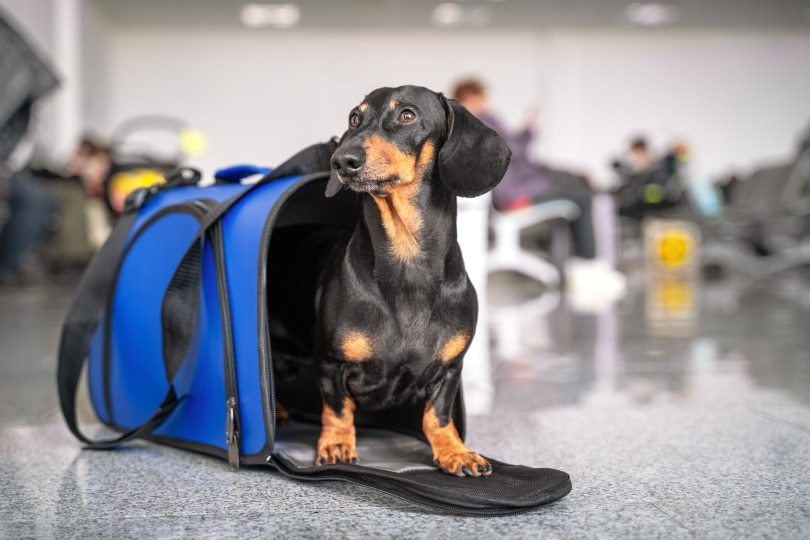
Informational
When you love something, you usually want to learn everything there is to know about it. So, even though books and educational material may seem like a plain gift, some dog lovers will appreciate them because they help to better understand their dogs.
When looking for informational gifts, try to look for material that covers topics on dog behavior and communication. These topics will help strengthen bonds and connections between dogs and their owners.
Memories
Dogs will fill people’s lives with many memorable moments. These memories are extremely valuable to dog owners, so they’ll appreciate gifts that help encapsulate them. Gifts like a photo frame are extremely thoughtful, and dog lovers will also be excited to show off an adorable photo of their dogs.
If you’re looking for something smaller, you can look into purchasing a nice key chain or locket that has a slot to hold a photo of the dog.
Conclusion
Out of all our reviews, our favorite gift is the Paint Your Life Pet Portrait. It’s a very thoughtful gift, and it offers enjoyment for all who get to see it. The Mobile Dog Gear Weekender Backpack Pet Travel Bag is another great gift because it’s functional and makes traveling with dogs an easier experience.
Finding a gift for a dog lover may take some time. However, giving dog lovers a gift that reminds them of their dog is sure to bring a smile to their faces, making the search absolutely worth it.
See also:
- 7 Best Eco-Friendly Dog Collars: Reviews and Top Picks
- 8 Best Dog Backpack Carriers for Hiking – Reviews & Top Picks
Featured Image Credit: LightField Studios, Shutterstock
Contents
- A Quick Comparison of Our Favorites (Updated in 2024)
- The 12 Best Gifts for Dog Lovers
- 1. Paint Your Life Pet Portrait – Best Overall
- 2. Fringe Studio “Dogs The End” Stoneware Mug – Best Value
- 3. Cuddle Clones Personalized Stuffed Dog – Premium Choice
- 4. Malden International Designs “Furry Logic” Photo Album
- 5. Mobile Dog Gear Weekender Backpack Pet Travel Bag
- 6. Your Golden Retriever Puppy Month by Month – Best for Puppies
- 7. Pearhead Pawprints Dog & Cat Wall Frame and Impression Kit
- 8. True Zoo Lucky Lab Bottle Holder
- 9. 101 Dog Tricks: Step by Step Activities to Engage, Challenge, and Bond with Your Dog
- 10. Entryways “Wipe Your Paws” Bone Shape Doormat
- 11. Tribe Socks Personalized Plaid Pet Face Socks
- 12. SlowTon Hands-Free Padded and Adjustable Sling Dog & Cat Carrier
- Buyers Guide – How to Find the Best Gift for Dog Lovers
- Conclusion






